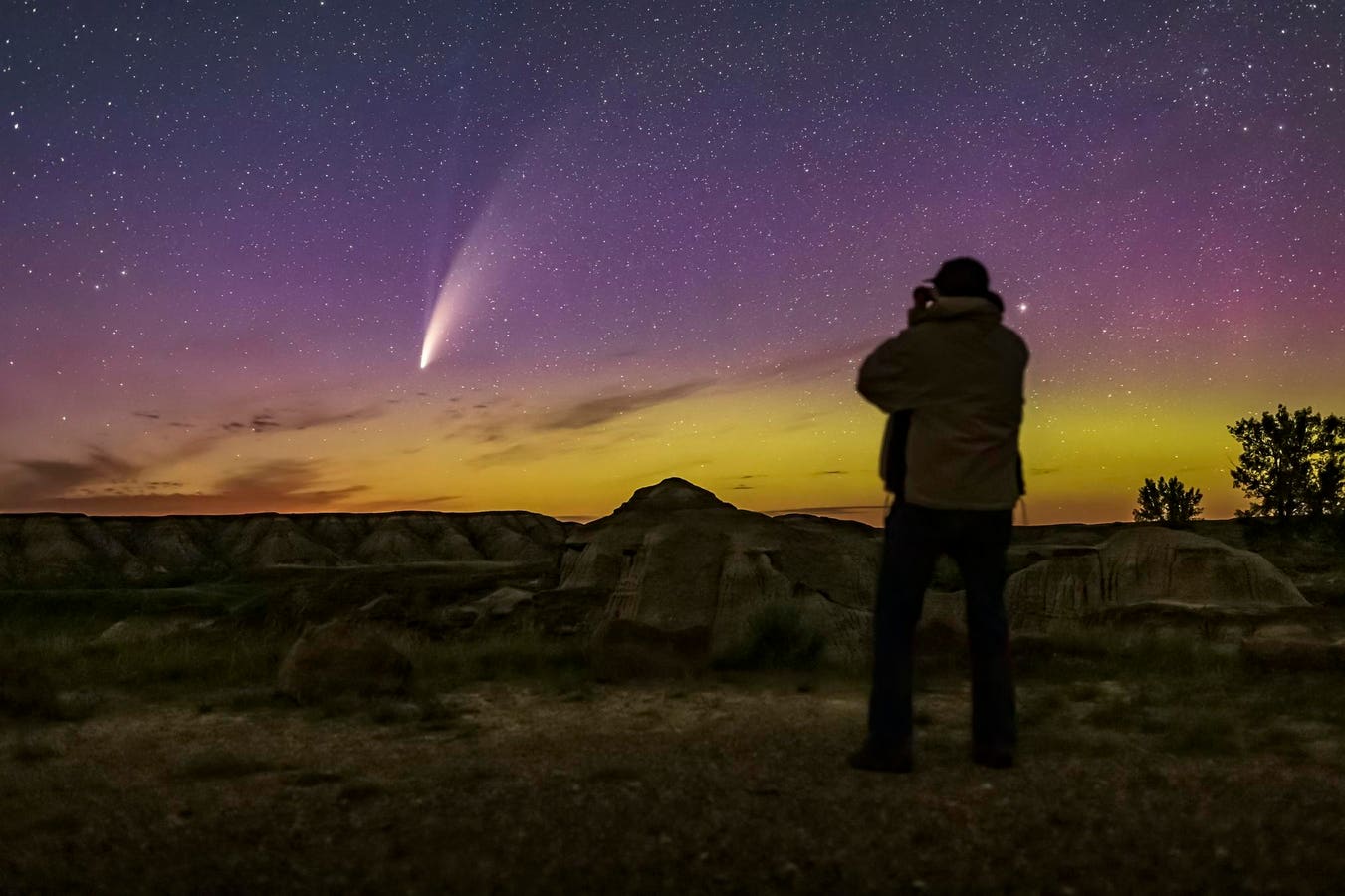
See The ‘Devil Comet’ That May Photobomb April’s Total Solar Eclipse
Another comet, NEOWISE, visible from Earth in 2020. (Photo by: Alan Dyer/VW PICS/Universal Images … [+] Group via Getty Images)
VW Pics/Universal Images Group via Getty Images
A “green comet” that last visited the solar system in the year of Queen Elizabeth II’s coronation is brightening in Earth’s night sky as it gets closer to the sun.
Amateur astronomers report that comet 12P/Pons–Brooks, a ball of rock, ice and dust about 18 miles (30 kilometers) in diameter that orbits the sun every 71 years, is now on the cusp of naked eye visibility.
If the trend continues then it could become a naked eye object during April 8’s total solar eclipse, as I reported last July. Although this one is known to flare as it reaches the inner solar system, comets are notoriously difficult to predict.
Naked Eye Object
Now visible in telescopes and binoculars in the western sky after sunset, comet 12P/Pons–Brooks is currently at a magnitude of 5.9, according to Stellarium, putting it right on the cusp of naked eye visibility. However, light pollution makes comet spotting much more difficult.
It’s moving through the constellations Andromeda and Pisces, which are visible in the western sky immediately after sunset, but only for a few hours.
The position of the comet in the west-northwestern sky on Wednesday, March 13.
Stellarium
‘Eclipse Comet’
Whether comet 12P/Pons–Brooks will be visible during the total solar eclipse only get dark with the 115-mile, wide path of totality, which will stretch through parts of Mexico, 15 U.S. states and Canada. However, even within it, the sky will likely only reach a deep twilight at best. That’s probably not enough to allow 12P/Pons–Brooks to show up easily to the naked eye.
It may be spotted using binoculars, a small telescope or a long exposure photograph—as comet C/2020 X3 (SOGO) was on December 14, 2020, as seen from Chile. During totality, comet 12P/Pons–Brooks will be close to Jupiter, so may be relatively easy to find.
The sky during totality on April 8, 2024—with comet Pons-Brooksclose to Jupiter at top-right.
Stellarium
Brightest And Best
If seeing 12P/Pons–Brooks during totality is something of a long shot, early April is the best time to see it. The two dates when comets are easiest to see are when they’re closest to the sun (in this case, about 232 million kilometers) and closest to Earth. For 12P/Pons–Brooks, that’s April 21 and June 2, respectively. However, for the northern hemisphere, June 2 is very close to the summer solstice when true darkness is hard to come by. So around April 21 is when to try for a view of the “devil comet” although the easiest time to see it will be April 12 when it’s closest to Jupiter.
Halley-Type Comet
Astronomers refer to Pons-Brooks as a “Halley-type” comet because of its 71-year orbit around the sun, which is similar to Halley’s comet—the first ever discovered twice—that takes 75-76 years to complete its orbit. It was first discovered in 1812 by Jean Louis Pons in France and later confirmed in America in 1883 by William R. Brooks, which led to its current name.
Comet 12P/Pons–Brook got its nickname “Devil Comet” in 2023 when it outburst and morphed into a strange shape, with a pair of “horns” protruding from the coma—the fuzzy area around the comet’s nucleus.
Wishing you clear skies and wide eyes.


